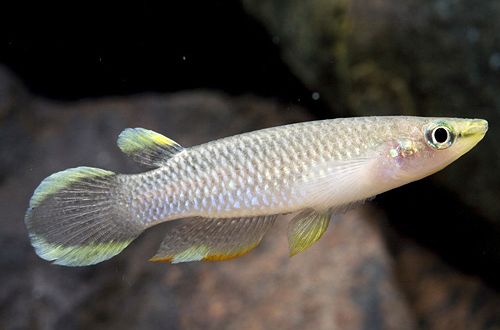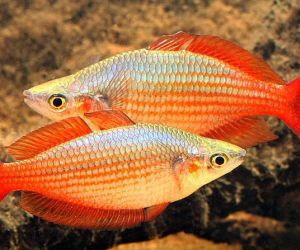
Pankhax
Panchax, scientific name Aplocheilus panchax, belongs to the Aplocheilidae family. One of the most popular and well-known fish, Killy, has many artificially bred varieties, which are distinguished by their variegated and varied colors. Such a color palette, coupled with their unpretentiousness and endurance, determined the success of the Panhax. It successfully tolerates both brackish and fresh water, recommended for beginner aquarists.

There are as many names for this species as there are variants of its coloration, often as a general term they use – “Asian pike” or “Indian pike”, because of its similarity in body shape with this river predator.
Habitat
Fish are widespread throughout Southeast Asia (India, Malaysia, Indonesia, Nepal, Cambodia, Vietnam, etc.). It lives in ponds, small backwaters of rivers, as well as in flooded agricultural fields and meadows. However, some representatives successfully live in coastal brackish waters. At present, the distribution area has been significantly increased, Panhax is artificially bred in various areas to combat the mosquito population, it is their larvae and other insects that are the basis of food.
Description
The slender, elongated body shape, the dorsal and anal fins are located close to the tail, which resembles the external structure of a common river pike. The head is flattened from above with a pointed muzzle and an upturned mouth. The main color is iridescent blue with a black spot on the dorsal fin, but a large number of varieties have been bred in which orange and red shades predominate. One of the most famous varieties is the Orange-finned Panhax or Indian Pike. Bred in India, has a bright orange tail.
Food
Accepts all types of dry industrial feed (granules, flakes) that can fit in her mouth. It is recommended to include meat products in the diet, for example, live or frozen bloodworms, brine shrimp. If for some reason, such meat products are unacceptable or impractical for you to purchase, use specialized dry food with protein supplements.
Maintenance and care
Due to its unpretentiousness, keeping it in a home aquarium will not be a big hassle. A quality filter and weekly water renewal of 25-30% will keep the aquarium clean. There are also no problems with the preparation of water. Panhax thrives in a wide range of pH and dH values. It is recommended to use a lid as the fish are prone to jumping out.
It prefers the upper layers of water, in the design it is necessary to avoid strong overgrowth of the surface. It is advisable to use groups of floating and rooting plants to leave enough space for swimming. A dark substrate with good lighting will emphasize the color of the fish. Decor elements (stones, driftwood, grottoes, etc.) at your discretion.
Social behavior
Peaceful in relation to other species of a similar or slightly larger size, but conflicts and skirmishes sometimes arise between males, but this rarely leads to injury. Should not be kept with small fish, they can potentially be considered prey.
Breeding / breeding
Sex differences are weakly expressed, so 4-5 individuals will be required for successful breeding in order to guess with a pair for sure. Spawning is possible in a common aquarium at any time, provided that there is Java moss among the plants, it is in it that the fish lay eggs, then it is transferred to another tank with similar parameters. Eggs must mature separately from their parents so as not to be eaten.
The fry appear after 11–15 days, at first they feed on the remains of the yolk sac and only then switch to Artemia nauplii, ciliates, and powdered dry food. Keep in mind that some fry grow faster than others and after reaching a certain size, they can eat their brothers. The largest ones should be discarded.
Diseases
Very hardy species, resistant to most common diseases. Health problems arise only in adverse conditions, in contact with infectious fish, etc. in this case, bacterial infections appear first of all. Read more about symptoms and treatments in the Aquarium Fish Diseases section.





